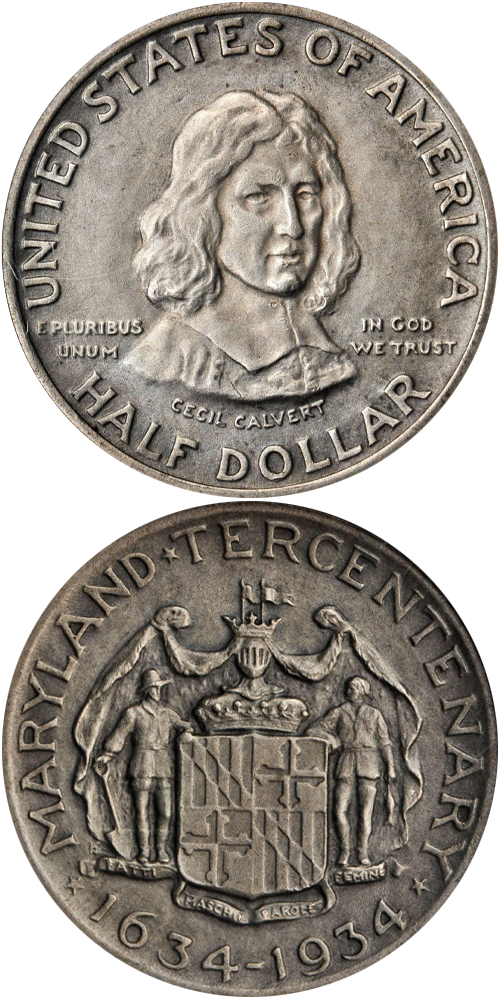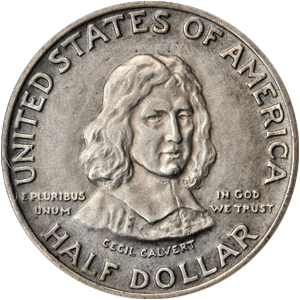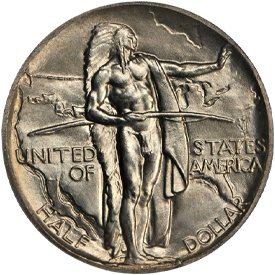Commemorative Coins, as suggested by their name, were struck to mark a special event, or the anniversary of some event of historical significance. This tradition really extends back to ancient times, with the Romans often striking coins to commemorate some victory in battle or other noteworthy occurrence.
The first U.S. commemorative coins were struck for the Columbian Exposition held in Chicago in 1893 to mark the 400th anniversary of Columbus’s voyage to America. Both a quarter picturing Queen Isabella of Spain as well as a half dollar portraying Christopher Columbus were issued. Another early issue was the Lafayette Dollar made in 1900 to mark the friendship between France and the United States. Many of the early commemorative issues were issued in conjunction with a major world exposition such as the Louisiana Purchase Exposition in St. Louis held in 1904, the Lewis and Clark Exposition in Portland in 1905 or the Panama-Pacific Expo held in San Francisco in 1915. After the initial quarter in 1893 and the dollar coin in 1900, all subsequent silver commemoratives during the classic era were half dollars.
In the late 1910s and 1920s, commemoratives were usually issued to mark the centennial of Statehood (Illinois, Maine, Missouri, Alabama) or another major anniversary such as the Pilgrim landing, Monroe Doctrine, Huguenot-Walloon settlement, Lexington-Concord, Sesquicentennial of Independence and others.
As commemorative coins were sold at a premium, they served as excellent fundraisers, and before long, more and more entities sought permission from the government to issue these coins. By the 1930s, dozens of commemorative issues began to appear, many only marking anniversaries of cities or charters, or a local event such as the opening of the Bay Bridge in San Francisco or a Music Center in Cincinnati. As these issues multiplied, collectors struggled to complete their sets leading to a speculative boom in prices in the mid and late 1930s. By 1937-38, the fad had played out, and the commemorative program was greatly curtailed. From 1939 to 1954, only three more issues were forthcoming and in 1954, a 28-year suspension in all issues ensued.
Collector interest in commemorative coins today remains good, with cycles of greater, and less activity the norm. As many were sold in cardboard holders, spectacular toning is seen on a number of issues, and these often sell for great premiums if the toning is deemed to be original.








